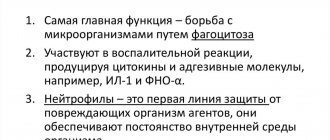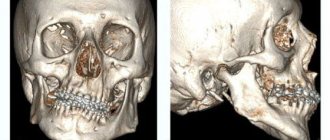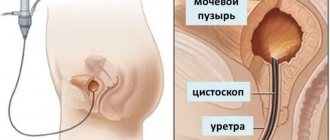The maxillary sinuses are located in the maxillary bone, occupying most of this segment of the facial disc. In a normal state, when there are no signs of inflammation or other pathological conditions, the maxillary sinuses are filled with air, maintain constant pressure and are pneumatized.
A photo of healthy maxillary sinuses shows that there is no mucus or serous exudate in their hollow structure. This is a normal condition of the maxillary sinus.
What are the maxillary sinuses
The maxillary sinuses are paired accessory cavities that are located inside the upper jaw and also cover the entire area of its bone tissue. For a more detailed study of the anatomical structure of the maxillary sinuses, a photo with a section of the skull and facial bones is used.
The maxillary sinuses are one of the largest paranasal cavities, and their formation begins during the period of intrauterine development of the fetus.
The maxillary sinuses are lined with a very thin layer of mucous membrane and are also covered with ciliated epithelium. The cavity of the maxillary sinuses is not connected by a large number of nerve endings.
The inner epithelial layer contains a minimal number of blood vessels and goblet cells. Due to these factors, diseases of the maxillary sinuses can develop in a latent form over a long period of time, and appear after the inflammation reaches its peak.
On the inner surface of the maxillary sinus there is an opening that connects the sinus cavity with the left and right nasal openings to maintain stable ventilation and movement of air masses. The lower wall of the accessory sinus is very thin and is subject to frequent inflammatory processes of an odontogenic nature.
Segments of the paranasal sinuses, which are located next to the upper dentition, are susceptible to the development of pathologies due to concomitant dental diseases of the oral cavity.
The maxillary sinuses are highlighted in blue
In medical practice, there are clinical cases when, during dental treatment, part of the filling material got into the maxillary sinuses, which entailed the development of an acute inflammatory process, as well as a violation of the integrity of the maxillary sinus.
Anatomy of the maxillary sinuses, diagram of their location
According to the anatomy of the maxillary sinuses, they are located inside the bone of the upper jaw. The layout looks like an irregular quadrangular pyramid. The older the person, the more rounded the cavity becomes.
The cavities were named after the English doctor Nathaniel Highmore, who was the first to study them.
Structure: walls, mucosa
The inner surface of the maxillary cavities is lined with thin mucosa consisting of ciliated epithelium. In such an epithelium, blood vessels and nerves are poorly developed, and there are few goblet cells (they produce mucus). Because of this disorder, diseases in the sinuses often remain latent.
The maxillary sinuses have a complex structure; they have several walls:
- Nasal (medial) . In this wall there is a hole that opens into the nasal passage. In its normal state it is pneumatized (filled with air).
- Front (aka front) . It is located in the cheek area, protected by a large amount of subcutaneous fat.
- Orbital . This is the thinnest wall; the infraorbital nerve and several venous vessels pass through it.
- Rear . Its location is next to the pterygopalatine parasympathetic ganglion, maxillary nerve and artery.
- Bottom . Located at the level of the nose or slightly lower.
Cavity size
The size of the cavities can vary, usually their volume ranges from 10 to 18 cm cubic. In some people they reach 30 cm . The left and right cavities most often have different volumes and sizes.
Anastomosis
There is only one natural anastomosis. The outlet is located posterior to the protrusion of the nasolacrimal duct at the highest point of the sinus. Usually its diameter does not exceed 5 mm.
Indications for expansion
There is such a procedure as endoscopy - an operation to expand the anastomosis of the maxillary sinuses. It is indicated in the following cases:
- Classical treatment did not bring relief to the patient.
- The patient suffers greatly from headaches.
- The clinical picture contains signs of intoxication.
The operation allows you to increase the entrance to the sinuses, which improves drainage of the cavities and reduces the manifestations of unpleasant symptoms.
In some cases, doctors perform complete removal of the maxillary sinus mucosa.
This procedure has its contraindications. It is prohibited for children with blood diseases, diabetes, somatic pathologies, hypertension, and heart failure . Sometimes it is physiologically impossible (or difficult) to perform such a procedure due to abnormalities in bone development or high bone density.
Find out what a blood test shows for sinusitis here.
Functions
The maxillary sinuses, whose location (photo of the skull bones makes it possible to study in detail the anatomical structure of the maxillary cavities) which cover the entire bone tissue of the upper jaw, perform the following physiological functions:
- reduce the total mass of the facial bones located in the front part of the skull (if the structure of the upper jaw was not hollow, then the weight of the skull would increase by 10-15%, which would create an additional compressive load on the cervical spine);
- take part in the formation of sounds during a conversation, as well as vocal resonance (in the absence of the maxillary sinuses, all spoken words and sounds would have a muffled sound);
- act as a kind of buffer at the moment of collision of facial bones with sharp and hard surfaces, preventing traumatic brain injuries;
- are an important baroreceptor organ that responds to changes in atmospheric pressure in the environment, takes part in stabilizing intracranial pressure to reduce the negative impact on brain tissue and its blood vessels;
- ensures warming of cold air that enters the nasal openings and cavities of the maxillary sinuses so that it reaches the lower respiratory tract sufficiently warm (in this case, the risk of hypothermia of the larynx, trachea, and bronchopulmonary tissues is minimized);
- makes the shape of the facial bones smaller in volume and creates a more aesthetic appearance;
- takes part in isolating the roots of the upper dentition, as well as the eyeballs, from the negative influence of cold environmental air masses (warm air is stored inside the hollow structure of the maxillary sinuses, which ensures stable heating of these parts of the body).
Disturbances in the functioning of the maxillary sinuses, the appearance of mucous or serous exudate in their cavity, lead to the loss of the above functions of the organ. The voice of a sick person becomes nasal, a feeling of compression of the skull is created, and attacks of severe headache appear.
Structure
The maxillary sinuses, the location (the photo of the facial bones of the skull shows the anatomical structure of the maxillary cavities) which covers the entire anterior part of the facial disc, have the following structure.
| Name of the wall of the maxillary sinus | Location and functional purpose |
| Upper | This part of the maxillary sinuses separates the maxillary cavity from the eyeballs and facial bones. Unlike other parts of the organ, it is least prone to the manifestation of inflammatory diseases. |
| Lower | The lower part of the maxillary sinuses separates the cavity from the upper dentition and the oral cavity. The bone tissue of this segment of the maxillary sinus has the thinnest structure. Therefore, it is often subject to injury as a result of dental procedures and bacterial invasions in case of poor oral hygiene. |
| Medial | This part of the maxillary sinuses is located below the upper segment of the cavity. The facial muscles are attached to the medial wall of the maxillary sinus. In the event of the development of an inflammatory or infectious disease, the medial part of the organ is least susceptible to pathological processes. |
| Front | The anterior wall of the maxillary sinus is part of the facial bones. It has a dense structure, as it acts as a buffer and absorbs static pressure when the face collides with sharp and blunt surfaces. |
| Posterior external | This is the smallest part of the maxillary sinus, which is actually an extension of the upper jaw. Performs the function of natural isolation of the sinus cavity from the contents of the cranium. In case of severe damage to the upper jaw, the posterior outer wall of the maxillary sinus is involved in the pathological process. |
All of the above walls of the maxillary sinuses are tightly connected to each other and form an isolated paired cavity, which is ventilated exclusively by a channel connected to the nasal openings.
Location and anatomical features
The maxillary sinuses are paranasal cavities that are located on either side of the nose. In a healthy person they are filled with air. The inner walls of the sinuses are covered with a mucous membrane, on which there is a small number of nerve cells, plexuses of blood vessels and mucous glands. The shell is quite thin.
The maxillary sinuses are located above the upper jaw, so they are sometimes called the maxillary sinuses. These cavities can have different shapes and sizes. Everything will depend on the individual structural features of the human skull. As you get older, your sinuses get larger.
The maxillary sinuses are sometimes confused with other cavities in the skull, such as those located above the eye sockets or in the bones of the forehead.
From a distance, the shape of the cavities resembles an irregular tetrahedral pyramid. You can understand the structure of the maxillary sinuses and their location by the location of these faces of the pyramid, that is, the walls of the cavity:
- Upper. It is the wall of the sinus, which is located in the infraorbital region. They have a small thickness. Next to it there are several large vessels and the infraorbital nerve.
- Inner wall. Located near the middle and lower nasal passages. The wall thickness increases from top to bottom. Near the eye socket there is a small opening through which the cavities of the nose and sinuses are connected.
- Front or front. Located close to the alveolar process of the maxillary bone. A branch of the ternary nerve runs along the surface of the wall.
- Rear. Determined by the position of the maxillary tubercle. The back side is in contact with the pterygopalatine fossa.
The thinner each of the walls, the smaller the volume of the maxillary sinus. If the facial bones and skull of a person are developed correctly, then the maxillary sinuses are connected directly to the nasal cavity.
Depending on the individual structural features of a person’s bones, several options for the location of cavities are possible:
- The lower part of the nose and the lower edge of the sinuses are located at the same level.
- The lower surface of the nose is slightly lowered compared to the lower border of the sinuses.
- The lower surface of the nose is located above the lower border of the cavities.
In the latter case, the roots of the upper teeth will be very close to the wall of the maxillary sinuses.
Purpose of the maxillary sinuses
The maxillary cavities are important for human health. Among their main functions are the following:
Reduction of skull mass. This is achieved due to the fact that the cavities are filled with weightless air.
- Improves the quality of odor recognition. The structure of the surface of the cavities makes it possible to increase the sensitivity of receptors. Thanks to this, we better distinguish aromas.
- Purifying the air entering through the nose. Before reaching the lungs, air must pass through the maxillary sinuses. During this time, it manages not only to heat up, but also to be cleansed of foreign impurities.
- The surface of the cavities is mucous. This helps trap viruses and bacteria. They get stuck in the mucus and do not enter the body. Thus, the sinuses allow you to protect yourself from various diseases.
- Participate in the formation of voice timbre. Since the cavities are not filled with anything, they act as a kind of resonator, which changes the tone of the voice.
- Suction. During treatment with medications administered through the nose, the mucous membrane of the sinuses promotes rapid absorption of substances.
- Help reduce the negative impact of sudden temperature changes on teeth and eyes.
The maxillary sinuses play an important role in the functioning of the body. Therefore, it is necessary to monitor their health.
Why might pain occur in the sinuses?
Any discomfort in the area of the maxillary sinuses is a reason to be wary and seek help from a doctor. This may be a signal of a developing disease. Some of the most common causes of pain include the following:
Sinusitis. An inflammatory process occurring in the sinuses. It has serious health consequences, so its symptoms should not be ignored. With sinusitis, breathing becomes difficult, there is an increase in body temperature, and a feeling of fullness in the sinuses. If you palpate the area under the eye sockets, severe pain is felt.
- Cyst. If the ducts inside the sinus have been blocked for a long time, a cyst may form. It is filled with an unpleasant light yellow liquid. If it is not diagnosed in time, its size will increase. This will lead to nasal congestion, difficulty breathing and swelling of the mucous membranes.
- Injury. Often, pain in the sinus area is caused by a fracture of the facial bone as a result of a strong blow.
- Odontogenic neoplasm. It becomes a consequence of inflammation of the dental nerve located too close to the wall of the cavity. It is benign in nature.
- Polyps. Thickening of secretory cells resulting from the inflammatory process. If polyps begin to form in childhood, their number may increase with age.
An MRI or CT scan will help identify the exact cause of pain.
At the first alarming symptoms, consult a doctor and undergo the necessary medical examination.
Causes of sinusitis
One of the most dangerous diseases of the maxillary sinuses is sinusitis. This is an inflammatory process that occurs inside cavities. Occurs as a result of infection.
Types of sinusitis
There are two main types of sinusitis: acute and chronic. Acute often results from improper treatment of rhinitis or infectious diseases. Hypothermia may be a provoking factor.
If treatment for acute sinusitis is not started on time, it develops into a chronic form. In this case, not only the mucous membrane is affected, but also the bone walls.
The main cause of sinusitis is an infection that gets inside the maxillary sinuses. It can get there through the blood or through the air.
There are several factors that contribute to the development of sinusitis:
Weakened immune system. The body simply does not have enough strength to fight the infection.
- Improper treatment of colds or rhinitis.
- Deviation of the nasal septum.
- Congenital anomalies of the nasal cavities.
Under the influence of these factors, the emergence of an acute form of the disease occurs. Any viruses that hover in the surrounding air, under certain conditions, can lead to sinusitis.
The chronic form of the disease is most often caused by the activity of staphylococci or streptococci.
In children, the disease is most often caused by chlamydial or mimicroplasma infection.
Often other diseases develop into sinusitis, for example, tonsillitis or pharyngitis.
Types of diseases
The maxillary sinuses, whose location (a photo of the maxillary sinuses allows us to study in detail their anatomical structural features) which covers the entire part of the bones of the upper jaw, can be affected by the following types of diseases.
Sinusitis
The most common disease of the maxillary sinuses, which develops as a result of inflammation of the mucous membrane and epithelial tissues of the paranasal sinus.
Sinusitis can have a bacterial, viral, allergic etiology, or occurs as a result of prolonged hypothermia of the body. The course of the disease is characterized by filling the cavity of the maxillary sinuses with mucous, serous or completely purulent exudate.
Sinusitis is dangerous due to a large number of serious consequences, which include the spread of the inflammatory process to the eyeballs and brain tissue.
Sinusitis can be one-sided, or it can affect two paranasal sinuses at once. In most cases, the disease develops as a complication of prolonged rhinitis, ARVI, scarlet fever, influenza, and sore throat. Sinusitis can occur in acute or chronic form.
Scleroma
This disease is characterized by a pathological condition and atrophy of the mucous membrane of the maxillary sinus. Changes in its surface are the consequences of a prolonged inflammatory process, mechanical trauma or surgical intervention.
Scleroma can also affect not only the mucous membrane of the cavity of the maxillary sinuses, but also the canal connecting the maxillary sinuses with the nasal openings.
Polyposis
This is a disease of the maxillary sinuses, the main symptom of which is the formation of benign tumors - polyps. Foreign growths are formed from the own epithelial cells of the inner layer of the maxillary sinuses.
Benign neoplasms appear as a result of a prolonged inflammatory process, infection of the maxillary sinuses with a bacterial, viral or fungal infection.
The main danger of the disease is that polyps can interfere with the ventilation of the maxillary sinuses, cause secondary inflammation, and the factor of degeneration of foreign growths into malignant cancerous tumors cannot be excluded.
Prevention of inflammation of the maxillary sinuses
To avoid the inflammatory process, you need to be vigilant about your own health, regularly take vitamins and strengthen your immune system. Mandatory measures to prevent sinusitis are as follows:
- avoid prolonged hypothermia;
- ensure high-quality hygiene of the nasal passages;
- spend more time in the fresh air, eat right;
- avoid close contact with sick people;
- maintain health levels with vitamins;
- promptly treat colds, acute respiratory viral infections, acute respiratory infections.
Symptoms
Inflammatory diseases of the maxillary sinuses, as well as atrophic processes of their mucous membrane, can develop acutely with a rich clinical picture of manifestation, or occur in a chronic form with periodic exacerbations.
The main symptoms of a painful condition of the maxillary sinuses manifest themselves as follows:
- a feeling of squeezing in the area of the wings of the nose and under the lower part of the eye socket;
- constant nasal congestion and the inability to carry out a full act of breathing through the nasal openings;
- when blowing the nose, serous or purulent exudate with a rich yellow, green or reddish tint is released;
- body temperature periodically rises, reaching 37-39 degrees Celsius, depending on the severity of the inflammatory process;
- there are attacks of headache, which intensify in the evening and at night, and discomfort is localized in the frontal part of the head;
- a person experiences general malaise, physical weakness, pain in the eyes.
Severe forms of sinusitis, the development of which is accompanied by extensive bacterial inflammation of the entire cavity of the maxillary sinus, can cause inflammation of the mucous membrane of the eyes.
What to do if your sinus hurts
To reduce swelling, relieve inflammation and pain in the sinuses, it is necessary to rinse the nasal passages with a solution of sea salt or herbal infusion of heather, calendula, and sage.
Procedures are carried out 3-4 times a day. To avoid overdrying and the development of swelling of the mucous membrane, oil instillations are used in a lying position. The mixture is prepared from olive and corn oil, taken in equal quantities, infused with St. John's wort for three hours.
Then, on the projections of the maxillary and frontal sinuses, you need to apply a warming ointment , for example, take 1/1 tsp on one match head of Zvezdochka balm. warm ghee.
The treatment course is 7-10 days.
Causes of organ diseases
The maxillary sinuses, whose location (photo of the skull bones makes it possible to study in detail the anatomical structure of the maxillary cavities) which covers the entire bone tissue of the upper jaw, can be subject to the pathological effects of bacterial, viral or fungal infection.
The following causes of diseases of this organ are identified:
- prolonged hypothermia of the body, as well as directly to the facial bones of the skull;
- a decrease in the protective functions of the immune system, which is caused by prolonged antibacterial therapy and unbalanced nutrition;
- the presence of concomitant diseases of the nasopharynx that have a chronic or acute course (for example, tonsillitis, pharyngitis, tonsillitis, scarlet fever);
- injuries of the facial bones associated with damage to the walls of the maxillary sinuses;
- fracture of the upper jaw, the healing of which occurred with complications or the addition of a bacterial infection;
- poor-quality treatment of one or several molars located in the upper row (during treatment of incisors, cleaning canals or filling them with filling material, damage to the lower wall of the maxillary sinuses is possible, which is a medical error and leads to odontogenic inflammation of the maxillary sinuses);
- penetration of a bacterial, viral or fungal infection into the cavity of the paranasal sinuses along with the blood flow (this cause of a painful state of the organ occurs if there is a focus of chronic infection in the human body with an abundance of pathogenic bacteria);
- prolonged allergic, infectious, vasomotor rhinitis, which was not subjected to adequate drug treatment, which in turn led to the accumulation of thick mucus in the sinuses with the development of chronic sinusitis.
Tobacco smoking, alcohol abuse, and drug use lead to decreased immunity and increase the risk of developing inflammatory and infectious diseases of the maxillary sinuses.
Causes of sinusitis
Before using official or alternative intensive care methods, it is important to understand the etiology of the pathological process and eliminate the pathogenic factor of sinusitis. Essentially, this is an internal runny nose that interferes with breathing, but does not go out. The main causes of pathology are increased activity of streptococci, staphylococci, fungal infections, other harmful microorganisms and allergens. If nothing is done, the disease becomes chronic and cannot be treated.
The following factors of the body and environment can become prerequisites for the development of sinusitis:
- weakened immune system;
- physiological curvature of the nasal septum;
- bad habits;
- prolonged hypothermia of the body;
- allergic reaction;
- chronic rhinitis, tonsillitis, stomatitis;
- water sports;
- lack of timely treatment of acute respiratory viral infections, acute respiratory infections;
- seasonal development of the disease;
- genetic predisposition;
- infection by microbes by airborne droplets.
Diagnostics
Determining the painful state of the maxillary sinuses is not very difficult. To confirm the inflammatory process in the maxillary sinuses, the patient will need to undergo the following types of examination:
- donate capillary blood for clinical analysis;
- undergo an examination by an otolaryngologist (rhinoscopy);
- X-ray examination of the maxillary sinuses;
- donate urine and venous blood for biochemical research.
The most objective type of diagnosis, which allows us to establish the presence of mucus and purulent exudate inside the cavity of the maxillary sinuses, is radiography of the facial bones of the skull. In a public hospital, the examination is free of charge. In a private clinic, the average cost of a comprehensive diagnosis will be 3,500 rubles.
What should you not do if you have sinusitis?
Patients often make serious mistakes during treatment at home. During the period of acute inflammation, dry heating of the maxillary sinuses should not be used (by applying hot salt, boiled eggs, etc.).
Hot inhalations are also contraindicated during this period. It is better to give preference to inhalations for the period of follow-up treatment and recovery.
You should be careful about the solutions used for rinsing. They should not contain impurities, solid particles, be cold or hot.
Prevention
In order to keep the maxillary sinuses healthy and prevent the development of an inflammatory process in them, it is recommended to regularly follow the following rules of prevention:
- in the cold season, always wear a hat;
- promptly treat infectious diseases of the nasopharynx, preventing them from becoming chronic;
- maintain oral hygiene;
- timely treatment of teeth whose roots are located in the upper jaw;
- provide the body with balanced nutrition;
- strengthen the immune system.
Allergic, infectious, vasomotor rhinitis, which lasts more than 2 weeks, can cause the development of sinusitis. Therefore, it is necessary to treat painful conditions of the nasopharynx in a timely manner.
Function of the maxillary sinuses: what are they needed for a person and where are they located?
At the moment, the question of the importance of the maxillary cavities in human life is open and has not been fully studied, but there are still assumptions and proven facts. They can be divided into 2 groups:
| Outdoor functions | Internal functions |
|
|
This material will tell you in detail about the symptoms of sinusitis without fever in adults.
The paranasal sinuses need constant air circulation and drainage. If these processes are disrupted, this can lead to the development of pathologies.
Since there are many empty sinuses in the upper jaw, it is much lighter than the lower jaw.
Treatment methods
Treatment of diseases of the maxillary sinuses is carried out with the help of medications, folk remedies, and surgery cannot be ruled out.
Medications
Treatment of diseases of the maxillary sinuses, which are accompanied by bacterial inflammation, is carried out using the following medications:
- Amoxicillin is a broad-spectrum antibiotic, which is prescribed to take 500 mg 2-3 times a day for 14 days (the price of the drug is 240 rubles);
- Doxycycline is a potent antibacterial agent that must be taken 100 mg per day for 1-2 weeks (the cost of the medication is 130 rubles);
- Erythromycin is an antibacterial drug for the complex treatment of sinusitis, which must be taken 1-2 tablets 3-4 times a day with a course of treatment from 6 to 14 days (the average price of the drug is 95 rubles for a plate of 10 tablets);
- Clarithromycin is an antibacterial agent that is taken 250-500 mg 2 times a day with a sufficient amount of liquid (the course of treatment is 1-2 weeks, and the cost of the medication is 170 rubles).
The prescription of the above drugs should be carried out by the attending otolaryngologist.
Traditional methods
In combination with taking medications, treatment of inflammatory diseases of the maxillary sinuses can be carried out using the following traditional methods.
Warming up with dry heat
You will need to take 200 g of kitchen salt, pour it into a frying pan and heat it over low heat. Warm salt is poured onto a piece of thick woolen fabric, which is tied in a knot to form a bag.
Heated table salt is placed against the bridge of the nose and wings of the nose. The duration of the treatment procedure is 10-15 minutes. These actions must be performed 2 times a day for 10-15 days.
Salt water rinsing
To use this traditional medicine, you will need to take 1 liter of warm boiled water, in which 2 tsp should be dissolved. kitchen salt. The resulting product is used to rinse the nose and maxillary sinuses.
First, one nasal opening is closed, and salt water is drawn in through the free channel. The fluid is then released through the other nasal opening that was closed with the hand. These steps must be performed once a day for 7 days.
Other methods
If drug therapy and folk remedies do not bring a positive therapeutic effect, the otolaryngologist may decide to perform a surgical operation.
The surgical intervention involves piercing the maxillary sinus with a special needle, followed by pumping out purulent exudate and treating the cavity of the maxillary sinuses with an antiseptic solution.
The surgery is performed under local anesthesia. It is also possible to wash the maxillary sinuses through the nasal openings without compromising the integrity of the paranasal sinuses.
Features of treatment in adults
Various methods are used to treat sinusitis; the type of treatment greatly depends on the characteristics and severity of the pathological process. It is better to start treating the disease in the early stages, otherwise you will have to spend a lot of time and money on therapy.
ENT specialists treat diseases of the maxillary sinuses . Therapy for disorders can be traditional, puncture or surgical. Let's look at each of the methods in more detail.
How to cure sinusitis and inflamed maxillary sinuses, remove fluid from the nasal cavity
Surgical treatment is performed only in very advanced cases or when traditional treatment methods do not help the patient. The intervention may be:
- Endonasal - access to the sinuses is through the nose.
- Extranasal – access is through the mouth. The doctor makes an incision on the lip, through which the anastomosis between the sinus and the nasal cavity is expanded (it is located on the medial wall).
The intervention is carried out under full anesthesia.
Nasal endoscopy
The endoscopic treatment method is used to clarify the diagnosis and remove formations inside the maxillary sinuses. Most often, these formations are tumors or cysts that appear with cystic sinusitis.
The main advantage of this treatment method is its low invasiveness. After the operation there are no scars, the recovery period is short and easy.
Puncture (puncture)
The procedure is used to remove purulent exudate from cavities and alleviate the patient’s condition. First, the sinuses are washed and antibiotics and NSAIDs are injected there . This is necessary for disinfection and antiseptic effect. After this, the needle insertion site is anesthetized, a puncture is made and the fluid is pumped out.
Most often, the procedure is carried out in a course, so a catheter is left at the puncture site. Further pumping is done through the hole already made.
A puncture is often done if cysts or maxillary cancer are suspected in order to collect material for analysis.
Many doctors have a negative attitude towards this type of treatment, because it is fraught with complications and has many contraindications. Some patients then complain of pain for a long time.
Traditional medicine - treatment at home
Traditional medicine can be an auxiliary method of treatment, but not the main one. Such treatment must be coordinated with your doctor.
Instead of pharmaceutical rinsing liquids at home, you can use them to cleanse the nasal cavity in adults:
- diluted calendula tincture;
- infusion of St. John's wort (recipe: add a teaspoon of herb to a glass of hot water and leave until it cools completely, then strain);
- saline solution with a drop of iodine.
For inhalation and warming up the respiratory tract, use bay leaf or regular jacket potatoes . The recipe is simple: add the component to the pan and fill it with water, let it boil for 5 minutes, turn off the gas and breathe in the steam generated by the boiling water. You can also add essential oils to the water; tea tree and eucalyptus oils are suitable for treating sinusitis.
What catarrhal sinusitis is is described here.
Our ancestors often used homemade tampons to treat sinusitis. To prepare the impregnation you will need:
- Honey.
- Onion juice.
- Alcohol.
- Milk.
- Vegetable oil.
- Laundry soap (pre-grind and melt in a water bath).
All components are taken in equal proportions and mixed, the ointment is heated in a water bath to obtain a uniform consistency. You need to soak a homemade gauze swab with the finished ointment, which is inserted into the nostril for 10 minutes.
You can drip your nose with aloe or Kalanchoe juice, liquid honey or drops of honey, onion and potato onions.
Washing
Nasal rinsing is done using a syringe without a needle or a syringe bulb. A rinsing agent based on an isotonic solution is poured into the instrument . It is imperative to rinse your nose over a sink, since normally the liquid should pass through the nasopharynx and exit through the second nostril. Some of it may leak out through the mouth.
In addition to rinsing, the patient is prescribed medications. Drug treatment includes taking antibacterial drugs in the form of sprays or injections (Amoxiclav, Sulvacin and others, sometimes penicillin drugs are prescribed), anti-edematous drugs (Nazol, Oxymetazoline), painkillers and anti-inflammatory drugs (Paracetamol, Aspirin, Nurofen), mucolytic drugs (the most a common example is Ambroxol). If the sinusitis is allergic, the patient is also prescribed antihistamines.
During treatment of sinuses, it is important to drink a lot of water, this prevents the mucous membranes from drying out, which is accompanied by the release of large amounts of mucus.
Possible complications
Negative consequences and complications of the painful condition of the maxillary sinuses can occur if a person does not treat chronic diseases of the nose and throat.
They are expressed in the following pathologies:
- spread of the inflammatory process to the eyeballs;
- penetration of a bacterial, viral or fungal infection into the brain tissue;
- urgent hospitalization of the patient and the need for surgery to remove purulent exudate;
- osteomyelitis of the facial bones, which can lead to their removal;
- blood poisoning and death.
The consequences of diseases of the maxillary sinuses can be seen in photos on the Internet or in the office of an otolaryngologist. The maxillary sinuses are located in close proximity to the dentition, organ of vision, and brain.
The maxillary sinuses act as a buffer during injury to the facial bones and prevent hypothermia of the roots of the teeth, eyeballs, and lower respiratory tract. Disruption of their work leads to attacks of headaches, chronic rhinitis and the formation of purulent exudate inside their cavity.
Article design: Vladimir the Great
Photo of sinusitis
Read here! Glaucoma - recommendations and practical advice on how to cure glaucoma. Treatment methods and contraindications (100 photos and videos)
Please repost
0










